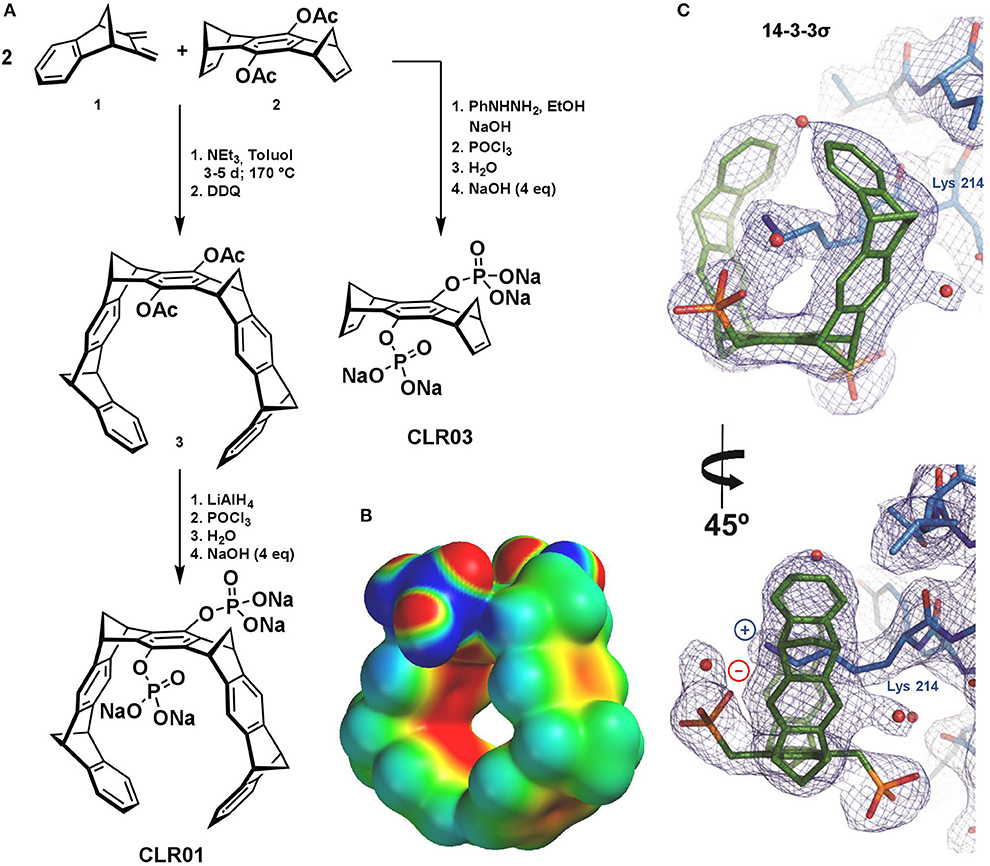Molecular tweezers are a class of biomolecule that can bind and stabilize other molecules, typically proteins, through non-covalent interactions. These interactions can be quite specific, with the ability to target individual amino acids or regions of a protein. Molecular tweezers have a wide range of potential applications, including as drugs, diagnostics, and tools for studying biological systems.
Molecular tweezers were first described in the early 1990s by researchers working on synthetic organic chemistry. The name “molecular tweezer” was coined by Nobel laureate Richard Smalley in reference to their ability to bind and stabilize molecules like a pair of Tweezers (Smalley, 1992). Since then, molecular tweezers have been extensively studied and their structure-activity relationships better understood. Dozens of different molecular tweezer scaffolds have been reported in the literature (for review see: Ulrich & Waldmann, 2006).
The binding pocket of a typical molecular tweezer is formed by two loops of non-polar residues (typically aromatic amino acids) that come together to form an “U” shape. This U-shape pocket is large enough to comfortably accommodate small molecules or peptides up to about 10 Å in length. The ends of the U-shape are often functionalized with groups that can interact with specific features on the target molecule; for example hydrogen bonding or electrostatic interactions. Once the target molecule is bound within the U-shape pocket it is effectively “clamped” in place and cannot escape without breaking one or more non-covalent bonds.
One advantage of using molecular tweezers over traditional small molecule drugs is their increased specificity. Whereas small molecule drugs typically bind promiscuously to multiple targets within cells, molecular tweezers can be designed to specifically target a single protein (or even a specific region on a protein). This allows for greater control over where and how they exert their effects within cells, which can be useful when trying to avoid off-target toxicity issues. Additionally, because they do not covalently modify their targets, moleculartwizzlers are generally much easier to develop into drug candidates than traditional small molecule inhibitors (which require extensive medicinal chemistry optimization). As such, they offer an attractive alternative for therapeutic development against challenging targets such as disease causing mutations or “undruggable” proteins implicated in cancer metastasis (Kohler et al., 2016; Waldmann et al., 2017).
In addition to their potential use as drugs, molecular tweezers also show promise as tools for studying biological systems at the cellular and subcellular level. For example, they have been used successfullyto purify enzymes from cell lysates (Gao et al., 2016), study enzyme–substrate interactions (Prakash et al., 2016), and probe protein–protein interactions (Wang et al., 2015). Molecular Tweezer Technology has also been harnessed for high throughput screening assays (HTS) aimed at identifying new bioactive compounds from natural product extracts (Jia et al., 2016). In this context HTS assays based on fluorescence resonance energy transfer (FRET) between donor and acceptor moieties attached to different parts of the same protein have proven particularly useful (Reddy et al., 2013; Dittmar et al., 2014; Jia et al., 2016). Indeed FRET technology has now become widely used across many different disciplines within life sciences research including cell biology (Dimaio & Strano MS&T Faculty Research Spotlight: Michael Strano – Using Nanoparticles To See What Plants See – Nano Letters (ACS Publications); Wollman & Webb 2018 – Protein Interactions Underlying Cell Behavior Revealed Through Fluorescence Resonance Energy Transfer Technologies ), neuroscience and developmental biology among others .


